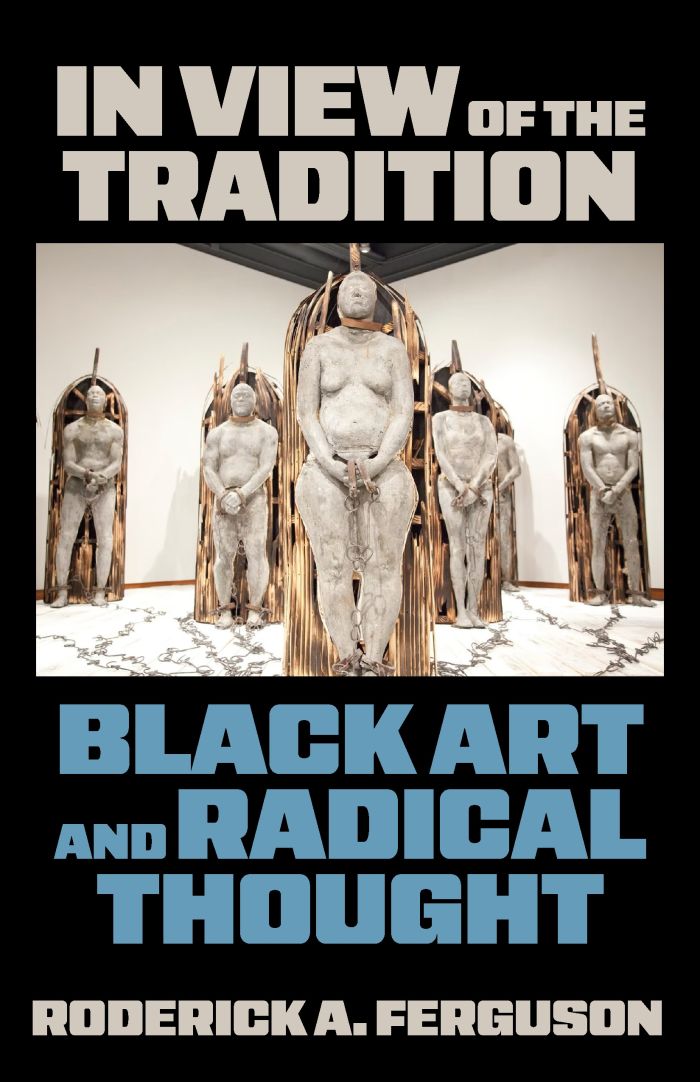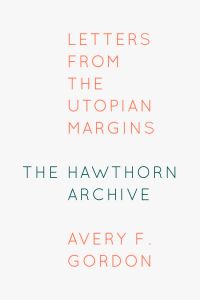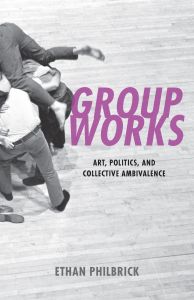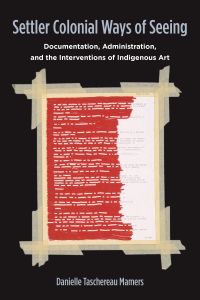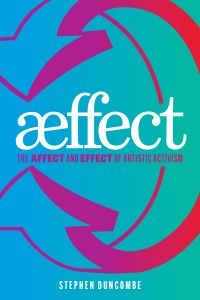Save 25% plus free shipping during our Winter Sale! Use promo code JOY2025. Expires 1/5/26.
In View of the Tradition
Black Art and Radical Thought

This book can be opened with

A field-shaping account of how contemporary Black art revitalizes the Black radical tradition
In View of the Tradition argues that contemporary Black artists do not simply comment on politics. They help to generate it. Moving across sculpture, installation, photography, and film, Roderick A. Ferguson shows how Black art clarifies the stakes of capitalism, migration, war, settler colonialism, and ecological crisis while widening the tradition’s feminist, queer, and transnational horizons. The book asks what it means to relocate Black art in the annals of freedom rather than the balance sheets of the marketplace.
Reading work by John Akomfrah, Stephen Hayes, Hew Locke, Fabrice Monteiro, Wangechi Mutu, Noah Purifoy, Cauleen Smith, and Carrie Mae Weems, Ferguson restores the social character of art: how artworks imagine community, connect histories, and model ways of making and remaking the world. Street-level practices associated with Purifoy reframe official narratives of disorder into studies of collective making and civic imagination. Weems’s Hampton Project situates Black and Native lives within intertwined histories of racial governance and settler pedagogy, building an aesthetics of reckoning that links emancipation to captivity.
Across the Atlantic world, artists turn to the sea as both history and prophecy. In the flotillas and filmic ecologies of Locke, Akomfrah, and Monteiro, water becomes a sensor of racial capitalism and refugee flight, and it calls Black radicalism to account for migration’s precarity and the force of deregulated markets. Mutu’s hybrid anatomies trace militarism’s afterlives, from colonial counterinsurgency to Cold War entanglements, where bodies and ecologies register violence yet assemble unexpected kinships. The book closes with art as praxis through Cauleen Smith’s Human 3.0 Reading List, a hand-drawn syllabus that doubles as an engine room of creation. Ferguson names a method that is accessible and rigorous: look closely, connect widely, and link visual literacy to insurgent study and to áshe, the capacity to make things happen. Written with clarity for general readers and with depth for scholars and classrooms, In View of the Tradition shows how Black art and radical thought come together to represent the world and to sketch other possible ones.
Contributing to studies of the afterlife of slavery as well as its connected ecologies, In View of the Tradition is a stunning work of research and writing. A vital and necessary addition to the field of Black Studies, Visual Culture Studies and Transatlantic Studies.—Kimberly Juanita Brown, author of Black Elegies: Meditations on the Art of Mourning

